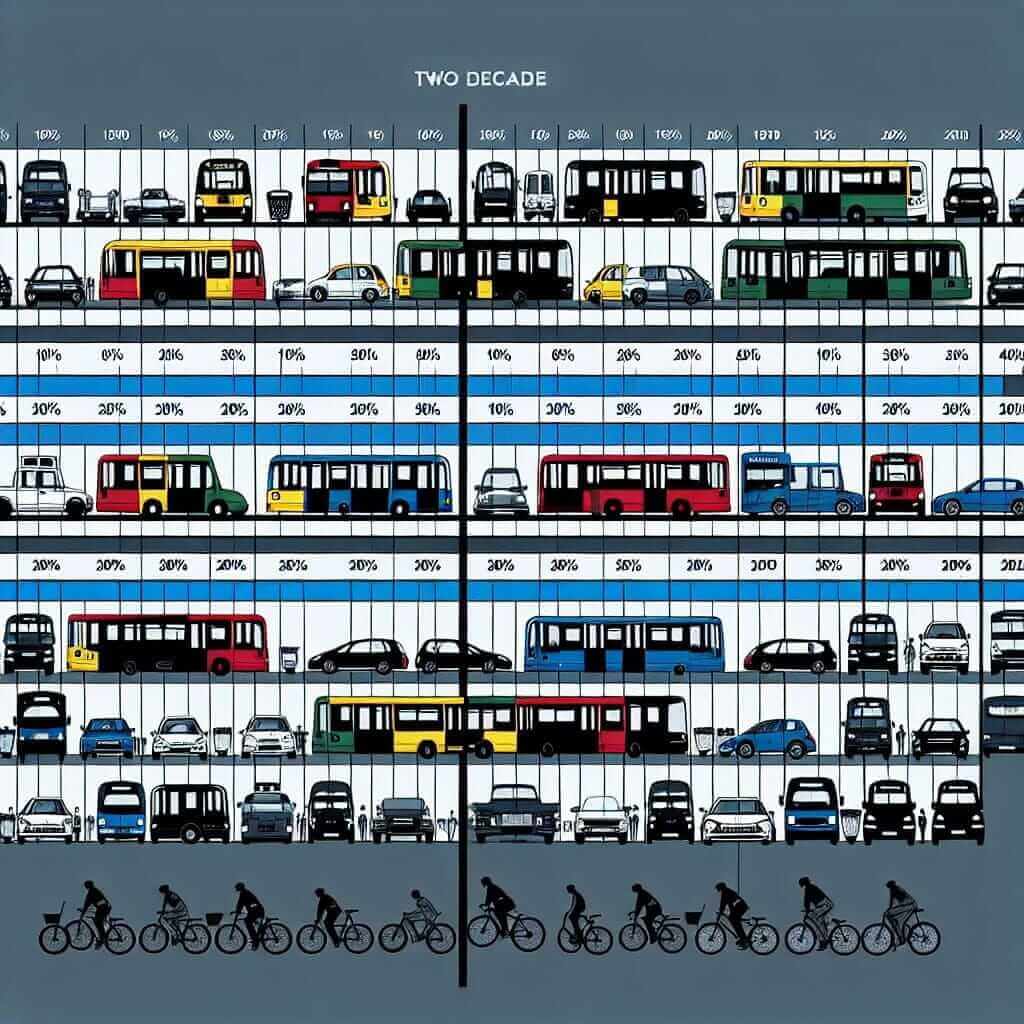Introduction: Mastering IELTS Writing Task 1 Tables
In the IELTS Academic Writing exam, Task 1 requires you to summarise and describe visual information, often presented as tables, charts, or graphs. While these tasks may appear daunting, they become manageable with a structured approach and consistent practice. This guide focuses specifically on tackling IELTS Writing Task 1 tables, providing you with a clear roadmap to success.
Understanding IELTS Writing Task 1 Tables
Tables present data in rows and columns, making it easy to compare and contrast information. Your task is to analyse the table and present a clear, concise, and accurate written report of at least 150 words within the allotted time frame.
How to Approach IELTS Writing Task 1 Tables
Follow these steps to effectively analyze and write about a table:
1. Analyze the Table
- Identify the main features: What does the table show? What are the units of measurement? What are the time periods involved, if any?
- Identify key trends and patterns: Are there any significant increases or decreases? Any notable similarities or differences?
- Highlight the most important data: Focus on the most relevant information to avoid unnecessary detail.
2. Structure Your Response
Organize your report into clear paragraphs:
- Introduction (Paragraph 1): Paraphrase the information given in the question prompt to introduce the table and its main features.
- Overview (Paragraph 2): Provide a general overview of the key trends, patterns, and significant data points without going into specific details.
- Body Paragraphs (Paragraph 3 & 4): Describe specific details, comparisons, and trends identified in the table. Use data to support your statements.
- Conclusion (Optional): Summarize the main points in a single sentence. This is optional for Task 1.
3. Use Appropriate Vocabulary and Grammar
- Vocabulary: Utilize a variety of vocabulary related to describing trends (increase, decrease, fluctuate, remain stable, etc.), making comparisons (similarly, in contrast, whereas, etc.), and expressing degrees of change (slightly, significantly, dramatically, etc.).
- Grammar: Employ a range of grammatical structures including comparatives, superlatives, and complex sentences to effectively present the information.
Example: IELTS Writing Task 1 Table
Let’s examine a sample IELTS table and apply the steps:
Table showing the percentage of people using different modes of transport in London in 1990 and 2010.
| Mode of Transport | 1990 (%) | 2010 (%) |
|---|---|---|
| Car | 45 | 30 |
| Bus | 25 | 20 |
| Train | 15 | 25 |
| Bicycle | 5 | 15 |
| Walking | 10 | 10 |

Sample Response:
The table illustrates the changing trends in transportation methods used by people in London between 1990 and 2010.
Overall, the use of private cars as a primary mode of transport declined, while public transportation and cycling saw increased popularity. Interestingly, the proportion of people walking remained constant over the two decades.
In 1990, cars were the dominant mode of transport, with 45% of the population utilizing them. However, by 2010, this figure had dropped significantly to 30%. Similarly, bus usage declined from 25% to 20% over the same period.
Conversely, train travel experienced a notable increase in popularity, rising from 15% in 1990 to 25% in 2010. Similarly, cycling emerged as a more favored mode of transport, with its usage increasing from a mere 5% to 15%.
Tips for Achieving a High Score
- Practice regularly: Familiarize yourself with different table structures and data trends.
- Manage your time: Allocate your time wisely for planning, writing, and proofreading.
- Focus on accuracy: Ensure your data representation is precise and avoid misinterpretations.
- Use linking words: Connect your ideas smoothly using appropriate linking words and phrases.
- Proofread carefully: Check for grammatical errors, spelling mistakes, and clarity of expression.
Conclusion
By following these guidelines and practicing consistently, you can approach IELTS Writing Task 1 tables with confidence. Remember to analyze the data carefully, structure your response logically, use appropriate vocabulary and grammar, and proofread diligently. Mastering these skills will undoubtedly enhance your performance in the IELTS Writing exam.